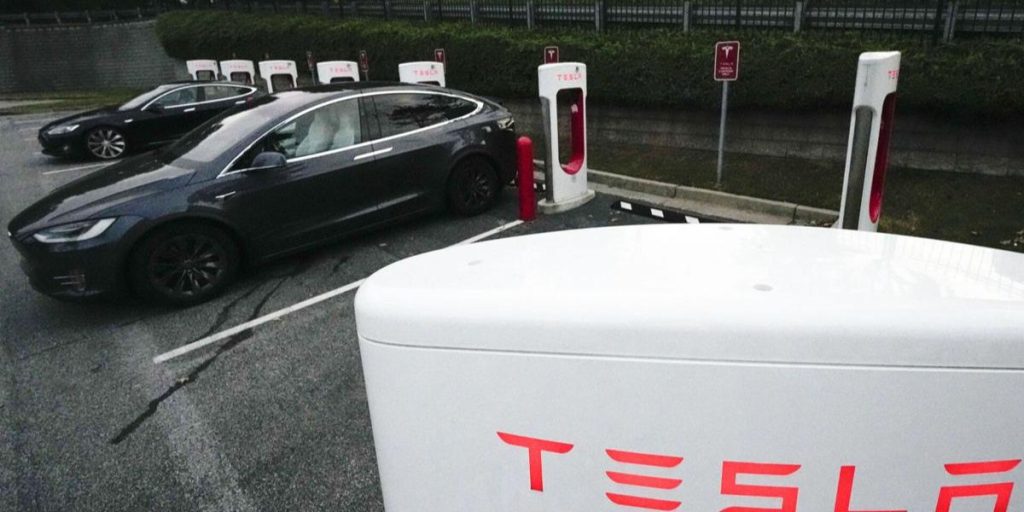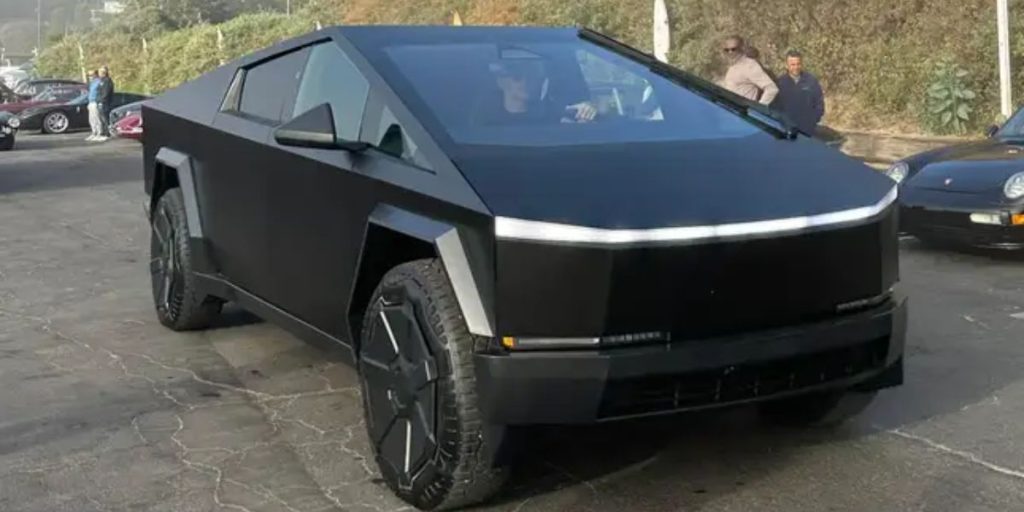Tesla’s fourth-quarter revenue and earnings fell short of analyst expectations, with only a 1% gain in automotive revenue compared to the previous year. The stock fell over 6% in extended trade.
Here are the essential figures:
- Earnings per share were 71 cents adjusted, compared to 74 cents projected by LSEG, formerly known as Refinitiv.
- Revenue: $25.17 billion, compared to LSEG’s estimate of $25.6 billion.
- Total revenue rose 3% from $24.3 billion a year ago. The operating margin for the quarter was 8.2%, down from 16% the year before and somewhat higher than 7.6% the previous quarter.
The modest gain in auto revenue was attributable in part to a lower average selling price following dramatic price cuts around the world in the second half of the year. Net income for the quarter more than doubled to $7.9 billion, or $2.27 per share, up from $3.7 billion, or $1.07 per share, the previous year. The increase was mostly due to a $5.9 billion one-time noncash tax advantage.
Tesla stated in its investor presentation that vehicle volume growth in 2024 “may be notably lower” than the previous year’s growth rate as the firm prepares to debut its “next-generation vehicle” in Texas. The company warns investors that it is “currently between two major growth waves.”

During Tesla’s quarterly results call, CEO Elon Musk was asked if investors should be concerned about his declared aim to hold 25% of Tesla. The query was in response to Musk’s previous tweet, in which he stated that’s how much voting control he’d like before transforming Tesla into a “leader in AI and robotics.”
Musk stated that he did not want to be “voted out by some sort of random shareholder advisory board,” and suggested developing a dual-class share structure. Musk cited proxy consulting firms Institutional Shareholder Services (ISS) and Glass Lewis as groups posing issues, as well as activists who “infiltrate” companies and “have strange ideas about what should be done.” Musk referred to ISS as “ISIS,” a reference to the Islamic State.
When asked about the schedule for the production of Tesla’s humanoid robot, Optimus, executives declined to provide detailed information.
Musk highlighted Optimus as “something that I think has the potential to far exceed the value of everything else combined” for Tesla. He argued that Tesla’s automotive technology is applicable to the humanoid robot “because the car is just a robot on four wheels.”
It’s “by far the most sophisticated humanoid robot that’s being developed anywhere in the world,” Musk said in a statement. Market competitors include Boston Dynamics, Agility Robotics, and Figure. Other robotics startups, like Sanctuary, Apptronik, 1X, Fourier, and Unitree, are all developing dexterous manipulation hardware that mimics human hands.
Musk stated that Tesla has “a good chance of shipping some number of Optimus units next year,” but did not define the capabilities or cost. Musk said during the call that he tends to be optimistic about deadlines.
Cybertrucks enter the market
During the quarter, Tesla started selling Cybertrucks to consumers. The company stated in its investor deck, “We expect the ramp of Cybertruck to be longer than other models given its manufacturing complexity.” Tesla claims it can currently make more than 125,000 vehicles per year. During the results call, Musk described the Cybertruck as “our best product ever” and a “head-turner.”

“I see us delivering somewhere on the order of a quarter-million Cybertrucks per year,” he said, without providing a specific timeline.
Tesla reported total automotive revenue of $82.42 billion for the year, up 15% from 2022. The energy segment, which is far smaller than Tesla’s core business, performed well, with revenue up 54% to $6.04 billion. The company sells solar power generation and energy storage equipment. Tesla’s “Services and Other” revenue increased 37% over the previous year, reaching $8.32 billion.
Tesla’s operating income declined year over year to $2.1 billion in the quarter, with the company blaming the decline on lower average sales prices and an increase in operating expenses “partly driven by AI and other R&D projects.” Spending on R&D rose to $1.09 billion from $810 million a year before, although it fell from $1.16 billion in the previous quarter.
In its shareholder presentation, Tesla announced that it has released a new version of its premium driver assistance software, known as the Full Self-Driving Beta or FSD Beta. The software does not make Tesla’s vehicles driverless; they still require an attentive driver behind the wheel.
As of the end of 2023, Tesla had 54,892 Supercharger connectors accessible to drivers worldwide at 5,952 stations.
Tesla shares have fallen almost 16% this year as of Wednesday’s close, after more than tripling in 2023.